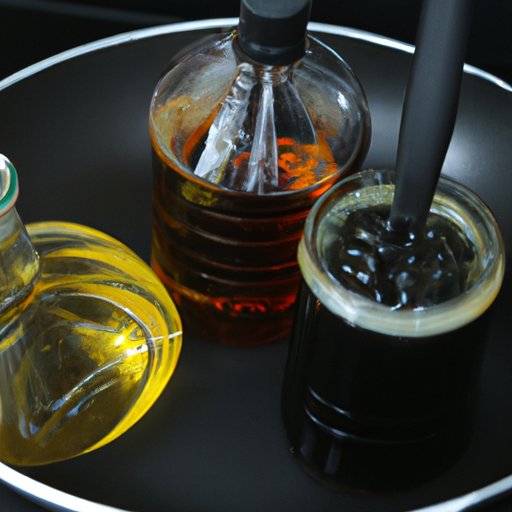
I. Introduction
Have you ever wondered if it’s safe to reuse frying oil? What about creative ways to use old cooking oil beyond just frying? Not only can reusing frying oil be cost-effective, but it’s also better for the environment. In this article, we’ll explore the science behind reusing frying oil and discuss some safe and creative ways to use it. You’ll also learn how different types of oil affect reusability and how reusing frying oil can result in cost savings.
II. The Science behind Reusing Frying Oil
Cooking oil is reusable because it has a high smoke point, meaning it can withstand high cooking temperatures without breaking down. When oil is heated repeatedly, however, certain molecular changes occur, and the oil can eventually break down, resulting in a negative effect on food flavor and quality. To determine if oil is still good to use, look for signs of discoloration, off odors, or the presence of foam or bubbles when heating the oil. To identify if oil has gone bad, look for a rancid smell or changes in color and consistency.
III. Safe and Creative Ways to Reuse Frying Oil
While reusing frying oil is most commonly associated with deep frying, there are other creative ways to use old oil. For example, you can use old oil to make salad dressing, infuse it with herbs for cooking, or use it to lubricate squeaky hinges. When reusing cooking oil, it’s important to follow safety guidelines: strain the oil through a fine-meshed sieve to remove any food debris, store it in an airtight container away from sunlight and moisture, and never mix old and new oil together.
IV. The Environmental Impact of Reusing Frying Oil
Reusing frying oil can significantly benefit the environment. Disposing of used cooking oil improperly can cause damage to the environment and clog up sewage systems. But if properly recycled and reused, used cooking oil can be converted into biodiesel or animal feed. To properly dispose of old frying oil, check with your local waste management facility to determine their oil recycling program.
V. How Different Types of Oil Affect Reusability
Different types of oil have different smoke points and chemical properties, which can affect how many times they can be reused safely. For example, oils with a low smoke point, such as olive oil, should not be reused more than twice. Oils with a high smoke point, such as canola oil, can be reused several times before breaking down. When deciding which oil to use for frying, consider the smoke point and the desired flavor and nutritional profile.
VI. The Cost Benefit of Reusing Frying Oil
Reusing frying oil can also result in cost savings. If properly stored, cooking oil can be reused several times, reducing the need to purchase new oil. To ensure your used oil remains fresh, store it in a cool and dark place and avoid mixing old and new oil. To make oil easier to reuse, you can strain it through a coffee filter to remove any impurities.
VII. Conclusion
Reusing frying oil can be a cost-effective and environmentally friendly option. By following safety guidelines and creative ways to use old oil, you can extend the life of your cooking oil while reducing your environmental impact. Consider the different types of oils available and their effects on reusability and cost savings. By doing so, you’ll be able to make informed decisions and make the most of your cooking oil.





